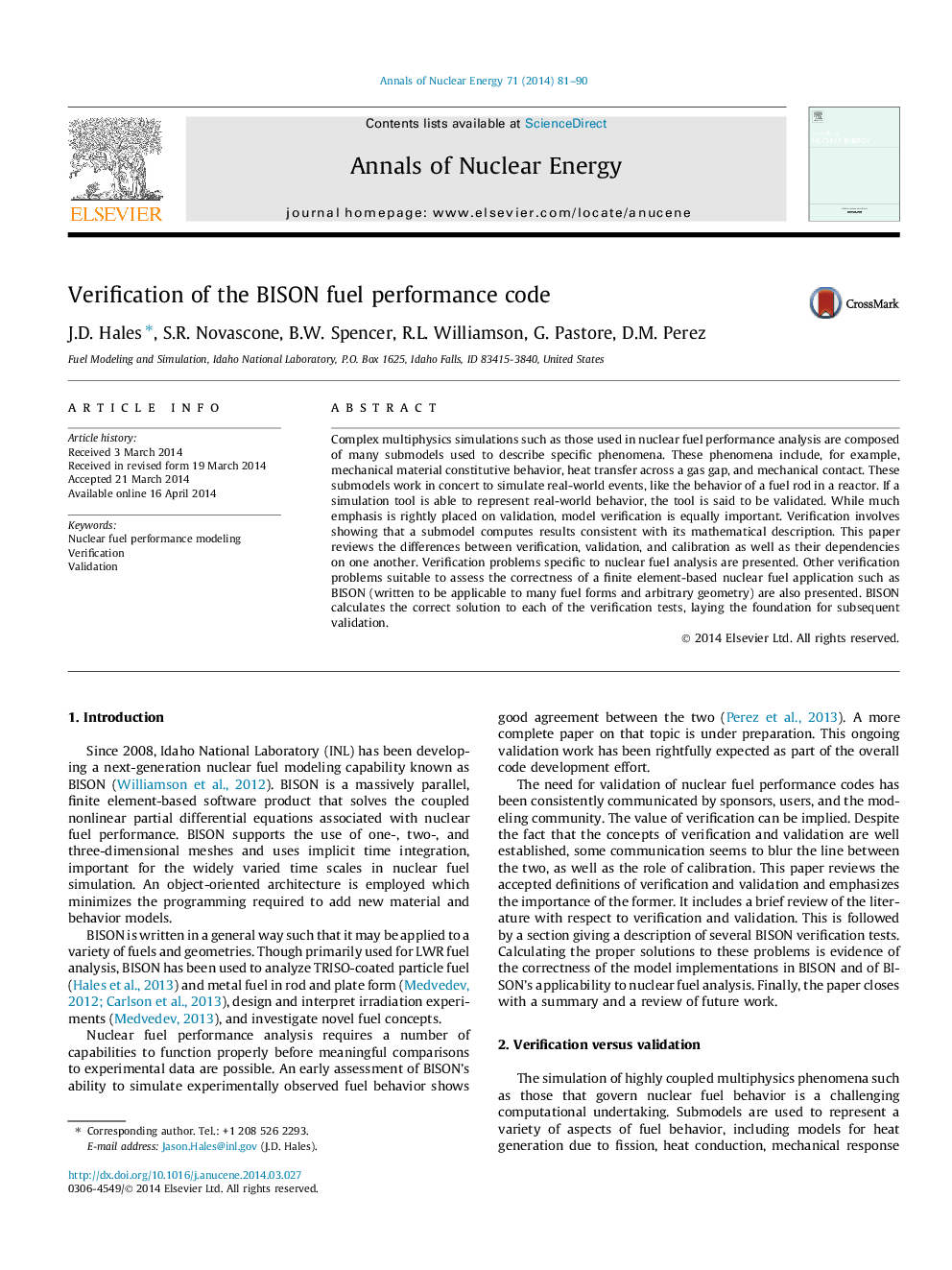| کد مقاله | کد نشریه | سال انتشار | مقاله انگلیسی | نسخه تمام متن |
|---|---|---|---|---|
| 1728256 | 1521127 | 2014 | 10 صفحه PDF | دانلود رایگان |

• Reviews the accepted definitions of verification and validation.
• Reviews verification papers from the literature.
• Gives several example of verification tests appropriate for a fuel performance code.
• Shows results from a set of validation tests.
Complex multiphysics simulations such as those used in nuclear fuel performance analysis are composed of many submodels used to describe specific phenomena. These phenomena include, for example, mechanical material constitutive behavior, heat transfer across a gas gap, and mechanical contact. These submodels work in concert to simulate real-world events, like the behavior of a fuel rod in a reactor. If a simulation tool is able to represent real-world behavior, the tool is said to be validated. While much emphasis is rightly placed on validation, model verification is equally important. Verification involves showing that a submodel computes results consistent with its mathematical description. This paper reviews the differences between verification, validation, and calibration as well as their dependencies on one another. Verification problems specific to nuclear fuel analysis are presented. Other verification problems suitable to assess the correctness of a finite element-based nuclear fuel application such as BISON (written to be applicable to many fuel forms and arbitrary geometry) are also presented. BISON calculates the correct solution to each of the verification tests, laying the foundation for subsequent validation.
Journal: Annals of Nuclear Energy - Volume 71, September 2014, Pages 81–90